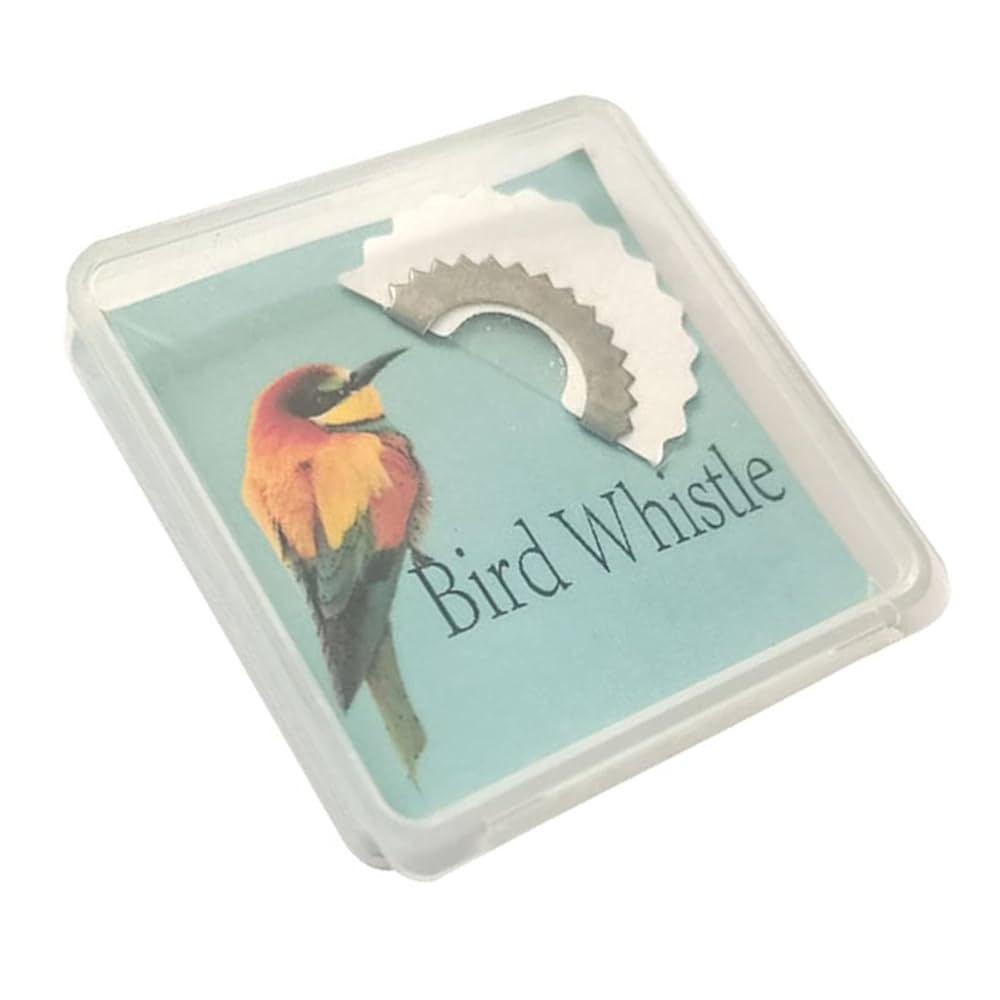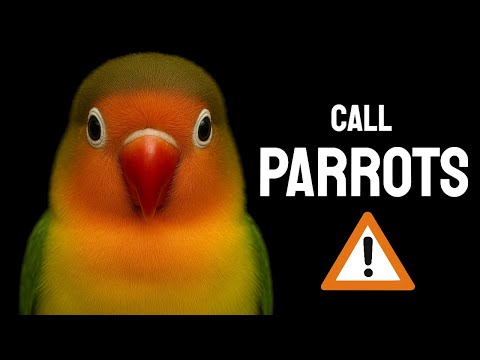Have you ever wanted to call a bird with just a simple whistle? Imagine the joy of hearing a bird respond to your sound, flying closer as if you shared a secret.
You don’t need special skills or expensive tools to make this happen. With a few easy tips and some practice, you can learn how to whistle in a way that grabs a bird’s attention. Keep reading, and you’ll discover simple steps that anyone can follow to connect with nature like never before.
Your next outdoor adventure could start with just a whistle.

Credit: www.amazon.ca
Basics Of Bird Whistling
Bird whistling is a simple way to call birds closer. It uses short, clear sounds that birds can hear well.
With practice, you can learn to copy bird sounds. This helps to attract birds in your area.
Types Of Bird Calls
Birds make different calls for many reasons. Each call has a special sound and meaning.
- Contact Calls: Short sounds to stay in touch with others.
- Alarm Calls: Sharp sounds to warn of danger.
- Song Calls: Longer sounds to attract mates or mark territory.
- Begging Calls: Sounds baby birds use to ask for food.
Why Birds Respond To Whistles
Birds respond to whistles because they think the sounds come from other birds. Whistles can sound like calls they know.
When birds hear familiar sounds, they come closer to check. Whistling can also make birds curious or alert.
Choosing The Right Whistle
Calling birds by whistling is an old and useful skill. The whistle you use makes a big difference.
Picking the right whistle helps you get better sounds and attracts birds easier.
Natural Vs. Artificial Whistles
Natural whistles are made from materials like wood or bone. They produce soft, real bird sounds.
Artificial whistles are made from plastic or metal. They are louder and last longer.
- Natural whistles sound more like real birds
- Artificial whistles are easier to use for beginners
- Natural whistles may need more care
- Artificial whistles work well in all weather
Best Whistle Models For Bird Calling
Some whistles are popular because they make clear bird sounds. They suit different needs.
Look for whistles that are easy to blow and hold. This helps you call birds better.
| Whistle Model | Material | Best For |
|---|---|---|
| Wooden Bird Call | Wood | Soft natural sounds |
| Metal Pea Whistle | Metal | Loud and clear calls |
| Plastic Bird Caller | Plastic | Durable and easy use |
| Double Tone Whistle | Metal | Varied bird sounds |
Whistling Techniques
Calling birds by whistling is a skill that anyone can learn. It takes practice and patience.
This guide covers simple patterns, pitch and rhythm, and breath control to help you start.
Simple Bird Call Patterns
Birds respond to clear and simple whistle patterns. Start with short, repeated sounds.
- Use short whistles like “tweet” or “peep”
- Repeat the pattern 3 to 5 times
- Pause for a few seconds between repeats
- Try variations in length and timing
Using Pitch And Rhythm
Birds notice changes in pitch and rhythm. Use high and low sounds to catch their attention.
| Pitch | Effect | Example |
| High | Alerts birds from far | Sharp whistle |
| Low | Calms birds nearby | Soft whistle |
| Fast rhythm | Shows urgency | Quick repeated notes |
| Slow rhythm | Invites birds closer | Longer pauses |
Practicing Breath Control
Good breath control helps you whistle clearly for longer periods. Practice breathing steadily.
- Take deep breaths before whistling
- Control airflow with your diaphragm
- Practice holding notes steadily
- Rest between whistles to avoid strain

Credit: www.youtube.com
Attracting Birds Quickly
Calling birds by whistling can bring them close fast. Using the right sounds and places helps attract birds easily.
Birds respond well to clear whistles. You can add other sounds and use food to make them come faster.
Timing And Location Tips
Birds are more active at dawn and dusk. These times are best to call them with whistles.
Choose quiet places with trees or bushes. Birds feel safe and are more likely to come near.
- Whistle early morning or late afternoon
- Pick spots near bird feeders or nests
- Avoid noisy areas with lots of people
Complementing Whistles With Other Sounds
Birds react to many sounds, not just whistles. Try adding soft chirps or calls to attract them.
Use natural sounds that birds make. This makes your whistle more believable and inviting.
- Mix whistles with gentle bird calls
- Use a soft tapping sound on wood or leaves
- Keep sounds simple and natural
Using Food And Shelter As Lures
Food attracts birds quickly. Place seeds or fruit near your whistling spot to lure them.
Birds like safe places. Adding a shelter or nest box helps them feel secure and come closer.
- Scatter seeds on the ground or feeder
- Put fresh water nearby
- Use birdhouses or shrubs for shelter
Common Mistakes To Avoid
Calling birds by whistling is a skill that takes patience. Many beginners make mistakes that stop birds from coming near. Avoid these common errors to improve your experience.
Understanding what to do and what not to do helps you enjoy birdwatching more. Here are some mistakes you should watch out for.
Overwhistling
Whistling too much or too loudly can scare birds away. Birds prefer gentle and spaced-out calls. Overwhistling makes them think there is danger nearby.
- Limit your whistles to short bursts.
- Pause between calls to listen for bird responses.
- Use soft tones instead of loud sounds.
- Watch the birds’ reaction to adjust your whistling.
Ignoring Local Bird Species
Different birds respond to different whistles. Ignoring local species means your calls may not work well. Learn about birds in your area to use the right whistle.
| Bird Species | Preferred Whistle Type | Common Habitat |
| American Robin | Soft, melodic whistles | Gardens and parks |
| Blue Jay | Sharp, short whistles | Woodlands and forests |
| House Sparrow | Quick, repetitive whistles | Urban and suburban areas |
Disturbing Bird Habitats
Birds need safe places to live. Loud noises, sudden movements, or getting too close can harm their habitat. Respect their space to avoid stress and harm.
Tips to avoid disturbing birds:
- Stay quiet and still while whistling.
- Keep a safe distance from nests and feeding areas.
- Avoid making loud noises near bird habitats.
- Do not touch plants or remove natural materials.

Credit: www.amazon.ca
Advanced Bird Calling Tips
Calling birds by whistling can be fun and rewarding. With practice, you can attract more birds and enjoy nature.
These advanced tips help you improve your bird calling skills. You will learn how to copy specific birds and use tools to help you.
Mimicking Specific Bird Species
Different birds have unique calls. Try to listen carefully to the pitch and rhythm of each bird.
Practice copying their sounds with your whistle. Focus on short bursts and varied tones to match their calls.
- Start with simple bird calls like chickadees or sparrows
- Use high and low notes to mimic different bird voices
- Repeat calls slowly at first, then speed up as you improve
Recording And Playing Back Calls
Recording bird calls helps you learn their sounds better. Use a phone or recorder to capture their songs.
Play the recordings back when you are outside. This can attract birds near you and give you a chance to practice.
- Record calls in a quiet place for clear sound
- Play calls at a low volume to avoid scaring birds
- Use recordings to study and copy bird rhythms
Using Technology To Enhance Calling
Technology can improve your bird calling. There are apps and devices designed to help you learn bird sounds.
Some devices can play calls in loops or change the pitch. This helps attract different birds and make your calls more natural.
- Use bird call apps to find and learn new sounds
- Try electronic whistles for clear and loud calls
- Use playback devices to repeat calls during bird watching
Frequently Asked Questions
How Do You Whistle To Attract Birds?
To whistle and attract birds, use clear, high-pitched sounds. Practice short, repetitive whistles that mimic bird calls. Stay calm and patient for best results.
What Types Of Birds Respond To Whistling?
Small songbirds like sparrows, finches, and robins often respond to whistling. Different species react to specific whistle patterns or pitches. Knowing local birds helps tailor your whistles effectively.
Can Anyone Learn To Call Birds By Whistling?
Yes, anyone can learn with practice and patience. Start by listening to bird calls and imitate them. Consistent practice improves your whistling skill to attract birds.
When Is The Best Time To Whistle To Call Birds?
Early morning and late afternoon are ideal times. Birds are most active then and more likely to respond. Avoid whistling during harsh weather or loud environments.
Conclusion
Calling a bird by whistling can be a fun skill. It connects you with nature. Practice makes it easier and more enjoyable. Start with simple tunes that birds recognize. Listen to their calls and mimic them. Patience is key in this process.
Enjoy each small success as you improve. Remember, birds may not always respond. That’s okay. Keep trying and enjoy the peaceful moments. This journey can be rewarding and relaxing. So, grab a moment, head outside, and start whistling. Nature awaits your call.

